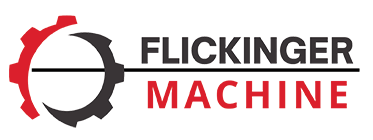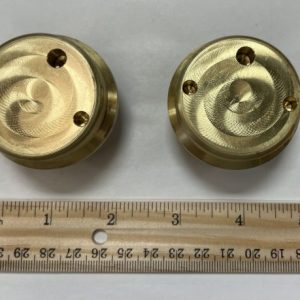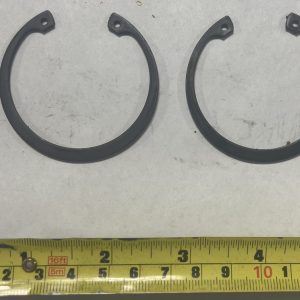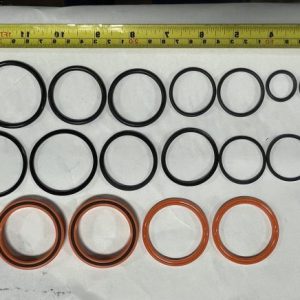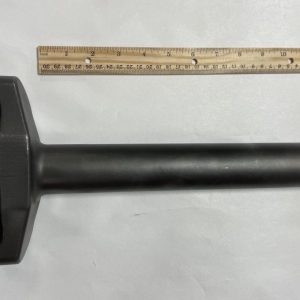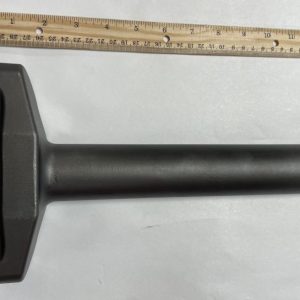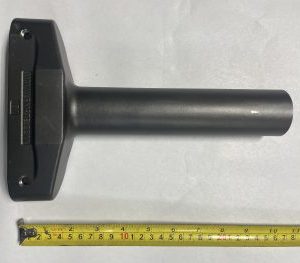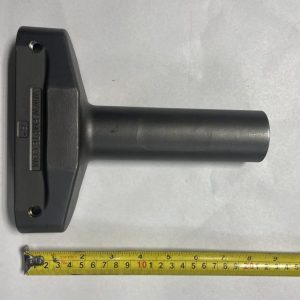Power Seating Jack Parts and Component
Optimize Post-tensioning Efficiency with Power Seating Jack Parts and Components
Power seating jacks are the force multipliers of any efficient post-tensioning crew. As such, reliable jack performance is critical for field productivity. A major part of that equation is minimizing jack downtime, and that means maintaining an inventory of power seating jack parts and components.
Fortunately, it’s rare for power seating jacks to sustain major failures, as long as the manufacturer’s limits are observed. However, we’re talking about heavy loading conditions here, which means failure points can emerge.
Accounting for those potential failure points is the first step in optimizing jack uptime. The second step is establishing an inventory of replacement parts, or at least identifying a parts supplier that your team can rely on.
Nose Pieces, Wedge Setters, Cylinders, Bushings, Blocks and Plates: Everything Needed to Keep Power Seating Jacks Running
The typical power seating jack is made of more than 50 components, and just about all of them are critical to the jack’s function. Ideally, post-tensioning crews would have a comprehensive part inventory that can account for any type of jack failure. However, there are a handful of critical components that require priority. Some of those high-priority parts include:
Wedge setters are positioned just behind the nose body and are responsible for setting the wedges. They’re designed for a range of nose body lengths and wedge designs.
Power Seating Pistons and Housing
The wedge setter is positioned just behind the nose piece and the power seating pistons sit behind the wedge setter. From this position, the pistons provide the linear motion that the wedge setter relies on. The pistons sit inside a housing unit that’s positioned just in front of the cylinder rods.
Nose Bodies
The nose body (or piece) is what goes into the anchor pocket when attempting to align the jack for stressing purposes. Nose bodies are available in an array of sizes and can therefore accommodate a range of clearance lengths.
The grippers are what initially grabs the strand and applies tensioning load. The grippers function identically to wedges, with serrated teeth that grab into the strand. The rest of the assembly includes a block and retainer plate to ensure the gripper remains properly positioned during tensioning.
Handles
Gripper and jack handles add much-needed usability and control to the equipment. The gripper handle sits at the back of the jack attached to the grippers and the jack handle sits on top. Together, they allow for precise, safe handling.
Why Maintaining an Inventory of Power Seating Jack Parts Makes Sense
With so many components going into every power seating jack, it can be tough to maintain a parts inventory. It’s a worthwhile objective, though, for the following reasons:
- Reduce downtime in the field – Equipment failures mean instant downtime for post-tensioning crews. In many cases, replacement components can be switched in while in the field, so tensioning work doesn’t have to stop. If your crew has backup jacks ready to go, they can be put into action while replacement components are fitted into the failed jack.
- Reduce any part acquisition delays – Even if field repairs are impossible or undesirable, maintaining a parts inventory will still save post-tensioning companies money. With zero lead times on acquiring replacement components, your power seating jacks can be repaired and returned to the field in a fraction of the time.
- Improve field versatility – It’s common for post-tensioning crews to run into project challenges that can only be resolved by modifying the power seating jack. Reduced-length tensioning cables, for example, may necessitate such field adjustments. By maintaining a deeper store of components, post-tensioning crews can extend their jacks’ versatility and optimizing productivity, no matter the situation.
Power seating jack parts can be sourced from a trusted supplier. The recommended approach is to acquire those components prior to any equipment failures, but a parts supplier can also provide components on an as-needed basis.
An experienced jack and pump parts supplier can do more than source components, too. They can also provide repair and maintenance services. This may involve a complete teardown of the power seating jack – a task that field personnel may not have the training, experience, or desire to do. By working with a reputable parts supplier, post-tensioning crews will also have access to expert repair and support services.
Power Seating Jacks Work Hard in Rugged Conditions - Back Them Up with High Quality Parts
Post-tensioning crews, and the power seating jacks they use, are subjected to tough working conditions. Dust, moisture, impact, heat, cold, and heavy loading can all contribute to equipment failure – and equipment failure means reduced productivity.
